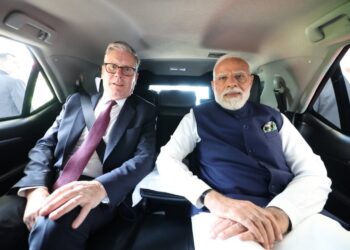The Albanese Government has announced a National Planning Level (NPL) of 295,000 international student places for 2026, marking a 25,000-place increase from 2025. The decision, revealed on 4 August, aims to deliver managed growth for the vital international education sector, which supports over 250,000 jobs and contributes more than $50 billion annually to the Australian economy.
All currently active education providers will retain at least their 2025 allocation, with some able to apply for additional places. Public universities, in particular, may seek growth in 2026 if they can demonstrate progress on key government priorities, such as expanding engagement with Southeast Asia and increasing student accommodation options.
“This is about making sure international education grows in a way that supports students, universities and the national interest,” said Education Minister Jason Clare. “The new planning level gives the sector certainty to continue delivering a high-quality educational experience to international students, while addressing national priorities.”
The 2026 NPL is still 8 per cent below the immediate post-COVID peak, reflecting the Government’s focus on ensuring sustainable, high-quality growth.
Minister for Home Affairs Tony Burke emphasised the balance between expansion and integrity: “We are making sure student visa processing supports genuine education outcomes and our strategic priorities – including increasing provision of student accommodation.”
To support regional and geopolitical goals, students from strategically important cohorts such as the Pacific, Timor-Leste, and Australian Government scholarship holders will continue to receive priority visa processing.
Importantly, students transitioning from Australian secondary schools, TAFEs, or affiliated pathway providers to publicly funded universities will be exempt from the planning level cap from 2026.
From 2027, subject to legislative approval, the Australian Tertiary Education Commission (ATEC) will oversee these managed growth arrangements for higher education.
Assistant Minister for International Education Julian Hill underscored the national significance of the sector: “It’s the biggest export we don’t dig or drill out of the ground… We want students to see Australia as a premium destination where they can access high-quality education and a great student experience.”
In the vocational education and training (VET) sector, the Government will continue to use visa processing and integrity reforms to shape provider composition from 2027 onwards. In the interim, VET providers can plan recruitment for 2026 with confidence, with no reduction in current allocations and continued equitable access to visa processing.
The Department of Education has published a detailed factsheet with indicative allocations for higher education commencements in 2026, with a total higher education component of 196,750 places.
Final allocations for publicly funded universities will be announced in October 2025, and the updated Ministerial Direction governing student visa processing for 2026 will soon replace the current Direction 111.











